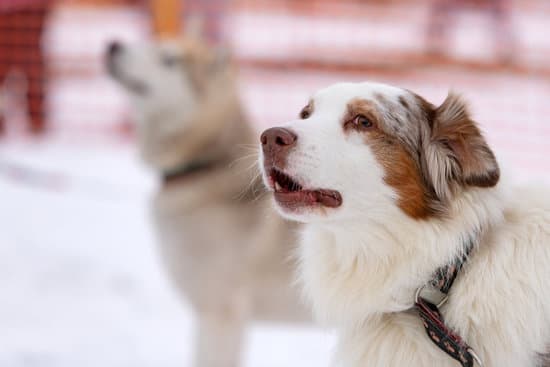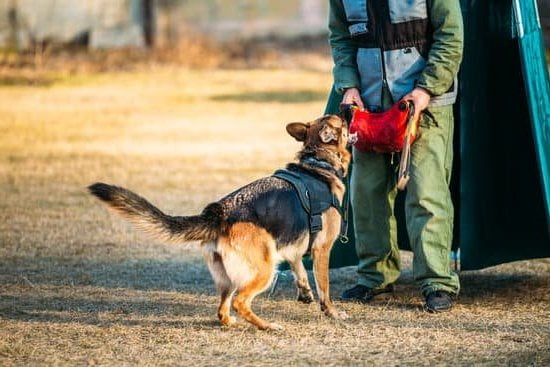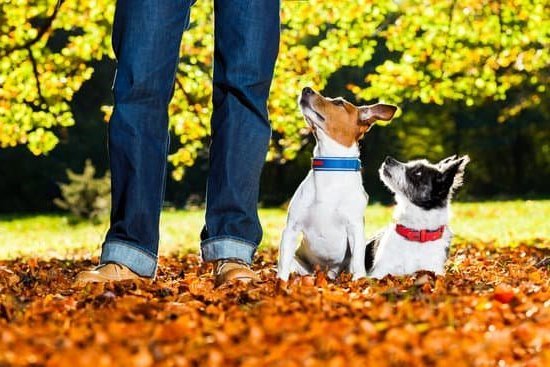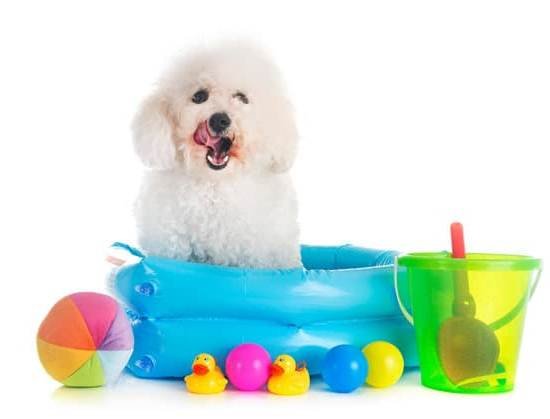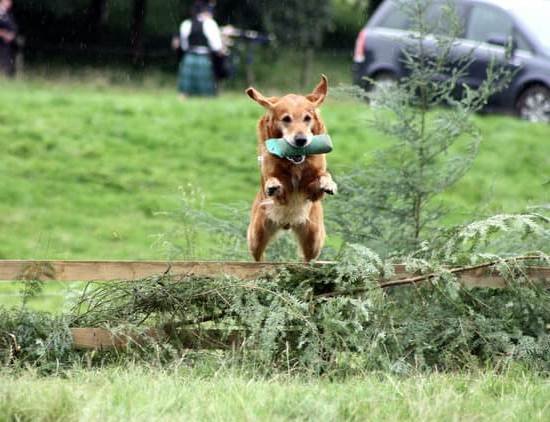Dog urinating in the house can be a frustrating and common issue for pet owners. Whether you have a new puppy who is still learning or an older dog with established habits, it’s important to address this behavior promptly and effectively.
In this article, we will explore various techniques and strategies to train your dog from urinating in the house. By understanding the underlying causes, establishing a consistent routine, utilizing positive reinforcement, setting up an indoor bathroom area, taking preventive measures, addressing accidents appropriately, seeking professional help when needed, and practicing patience and persistence, you can successfully house train your dog and create a happy and accident-free home.
The first step in addressing this issue is understanding why dogs urinate in the house. There are several reasons that can contribute to this behavior, including inadequate potty training, medical conditions, anxiety or fear-related issues, territorial marking, or simply not being able to hold it in for long periods. Identifying the underlying cause of inappropriate urination is crucial in order to develop an effective training plan tailored to your specific situation.
Creating a consistent and well-structured routine is essential when training a dog not to urinate indoors. Dogs thrive on routine and predictability, so establishing set times for feeding, playtime, walks, and bathroom breaks will help teach them when and where they should eliminate. Additionally, using positive reinforcement techniques such as praise or treats when your dog eliminates outside can reinforce good behavior and motivate them to continue doing so.
In the following sections of this article, we will delve deeper into each of these topics and provide practical tips on how to successfully train your dog from urinating in the house. With the right knowledge, dedication, and consistency, you can overcome this challenge and create a harmonious living environment for both you and your furry friend.
Identifying the Underlying Causes of Inappropriate Urination
In order to effectively address the issue of a dog urinating in the house, it is essential to identify the underlying causes of this behavior. There can be several reasons why a dog may exhibit inappropriate urination, including medical issues, lack of proper training, anxiety or stress, territorial marking, or even simply not understanding where they should eliminate.
The first step in identifying the underlying causes is to rule out any potential medical problems that could be causing the inappropriate urination. If your dog has suddenly started urinating in the house or if there are other changes in their behavior or health, it is recommended to consult with a veterinarian. They can conduct a thorough examination and run any necessary tests to determine if there are any underlying medical conditions contributing to the problem.
If medical issues have been ruled out, it is important to evaluate your dog’s training and routine. Inappropriate urination may occur if your dog has never been properly trained on where and when to eliminate. In this case, the solution lies in implementing an effective potty training program. This involves consistent reinforcement of appropriate elimination behavior and providing frequent opportunities for your dog to go outside or use a designated indoor bathroom area.
Additionally, consider whether your dog may be experiencing anxiety or stress which can contribute to inappropriate urination. Changes in routine, new environments, or separation anxiety can all cause a dog to have accidents indoors. Addressing these underlying emotional factors through behavior modification techniques and creating a calm and secure environment can help reduce the occurrence of inappropriate urination.
By identifying the specific causes behind your dog’s inappropriate urination, you will be better equipped to implement targeted strategies that will address and resolve this issue effectively. Whether it’s through addressing medical problems, implementing proper training techniques, or reducing anxieties and stresses, understanding these underlying causes is crucial for achieving long-term success in house training your dog.
Creating a Consistent and Well-Structured Routine for Your Dog
Training a dog to stop urinating in the house requires creating a consistent and well-structured routine. Dogs thrive on routine and establishing one can help them understand when and where they are supposed to relieve themselves. Here are some key steps to include in your routine:
- Establish regular feeding times: Feeding your dog at the same time every day will help regulate their digestive system, making it easier to predict when they will need to go outside. It’s recommended to feed your dog two or three times per day, depending on their age and size.
- Set specific potty breaks: Take your dog outside for potty breaks at specific times during the day, such as first thing in the morning, after meals, before bedtime, and every few hours in between. Use verbal cues like “go potty” or “get busy” consistently during these breaks to associate them with the action of relieving themselves.
- Choose a designated bathroom spot: Designate a specific area in your yard as the bathroom spot for your dog. This will help them understand where they are supposed to go each time they are outside. You can also use cues like scent markers or specific words like “go pee” to reinforce this spot as the designated bathroom area.
- Be patient and consistent: Dogs need repetition and consistency in order to learn new behaviors. Stick to the schedule you have established and be patient with your dog as they adjust to it. Celebrate successes by praising and rewarding them each time they eliminate outside.
Regular exercise is also important for managing a consistent routine for your dog’s bathroom habits. Physical activity helps stimulate their bowels and bladder, making it more likely that they’ll need to go outside during their scheduled bathroom breaks.
Creating a consistent and well-structured routine will not only help prevent accidents in the house but also reinforce positive behaviors associated with going outside. Be aware that accidents may still happen, particularly during the early stages of training, so it’s important to remain patient and persistent throughout the house training process.
Positive Reinforcement Techniques for Potty Training
Potty training is an essential aspect of teaching a dog to urinate in appropriate areas and prevent accidents inside the house. Utilizing positive reinforcement techniques can be highly effective in encouraging desired behavior and expediting the learning process for your furry friend.
Use Rewards
Rewarding your dog for eliminating in the designated area is one of the most effective methods of positive reinforcement during potty training. Whenever your dog successfully urinates in the correct spot, immediately praise them with verbal affirmations, cheerful tone of voice, or even a small treat. The goal is to associate going to the bathroom in the right place with positive experiences, making it more likely for your dog to repeat this behavior.
Establish a Command
Another crucial aspect of potty training with positive reinforcement involves establishing a command that signals it is time for your dog to go to the bathroom. Choose a simple and consistent phrase like “go potty” or “do your business”. Use this command each time you take your dog to their designated bathroom area. Over time, they will learn to associate this phrase with eliminating waste and will eventually respond accordingly when given the command.
Consistency and Timing
Consistency plays a vital role in any form of dog training, including potty training. Take your dog outside or bring them to their designated indoor bathroom area frequently throughout the day, especially after meals, playtime, waking up from sleep, or drinking water. By providing regular opportunities for elimination, you are increasing the likelihood of success and minimizing accidents inside.
Remember that potty training requires patience and repetition. It may take some time before your dog consistently understands where they should go to relieve themselves. By using positive reinforcement techniques such as rewards, establishing commands, and maintaining consistency in timing, you can effectively train your dog to eliminate in appropriate places leading to long-term success in house-training efforts.
Effective Ways to Set Up a Proper Indoor Bathroom Area for Your Dog
One of the key steps in successfully training a dog to stop urinating in the house is to provide them with a designated indoor bathroom area. This section will outline some effective ways you can set up this area to encourage your dog to use it consistently.
- Choose an appropriate location: Selecting the right spot for your dog’s indoor bathroom is crucial. Ideally, it should be an easily accessible area that is separate from their sleeping and eating areas. Consider using a corner of a room or a utility space that can be kept private.
- Use the right materials: To establish the indoor bathroom, you will need specific materials that are easy to clean and maintain. The most popular options include puppy pads, artificial grass patches, or even litter boxes designed for dogs. Experiment with different options to see which one works best for your dog.
- Set clear boundaries: When setting up the bathroom area, ensure that it is clearly defined so that your dog understands where they should eliminate. You can use baby gates or other barriers to create a physical boundary around the designated spot.
- Gradual training: Initially, you may need to guide your dog towards the indoor bathroom area until they become accustomed to using it regularly. Whenever you notice signs that they need to go, gently lead them towards the designated spot and encourage them with praise or treats when they use it correctly.
- Consistency is key: Be consistent in taking your dog to their indoor bathroom area at regular intervals throughout the day – especially after meals, naps, or playtime. Remember that puppies have smaller bladders and may require more frequent bathroom breaks compared to adult dogs.
Setting up a proper indoor bathroom area for your dog not only helps prevent accidents inside the house but also provides them with a reliable and convenient place to relieve themselves when needed. With consistency and patience, you can help train your dog to use this designated spot effectively, leading to a cleaner and more harmonious living environment for both you and your furry friend.
Preventive Measures to Reduce the Likelihood of Accidents
One of the key aspects of successfully house training a dog is to set them up for success by implementing preventive measures that can help reduce the likelihood of accidents. While accidents may still happen from time to time, taking steps to prevent them can significantly speed up the house training process and improve long-term success.
- Supervision: Keeping a close eye on your dog is crucial during the house training process. By closely supervising your dog, you can quickly identify when they show signs of needing to go potty and promptly take them outside or to their designated indoor bathroom area.
- Establish a Routine: Dogs thrive on routine, so establishing a consistent schedule for feeding, exercise, and potty breaks can be incredibly helpful in preventing accidents. Aim to feed your dog at the same times each day and take them out for potty breaks shortly after eating or drinking.
- Limit Access: Restricting your dog’s access to certain areas of the house can prevent them from having accidents in unsupervised areas. Consider using baby gates or closing doors to confine your dog to a specific room or area where accidents are easier to manage and clean up.
Implementing these preventive measures can greatly reduce the likelihood of accidents during the house training process. By setting your dog up for success and providing clear boundaries and expectations, you will create an environment that promotes good potty habits. Remember, consistency is key in reinforcing desired behaviors and helping your dog understand what is expected of them.
| Prevention Measure | Description |
|---|---|
| Supervision | Keeping a close eye on your dog to identify signs of needing to go potty. |
| Establish a Routine | Feeding, exercise, and potty breaks should be on a consistent schedule. |
| Limit Access | Restricting your dog’s access to certain areas of the house to prevent accidents. |
Addressing Accidents
Accidents happen, and even with the best training, there may be times when your dog has an accident and urinates in the house. It’s important to address these accidents promptly and effectively to prevent your dog from continuing to use the same spot as a bathroom area. Here are some tips for cleaning and removing dog urine smells from your home.
Act Quickly
When you discover an accident, it’s crucial to act quickly. The longer urine sits on a surface, the more it will penetrate and create an unpleasant smell. Start by using paper towels or a clean cloth to blot up as much urine as possible. Avoid rubbing the spot, as this can spread the urine around and make it harder to remove.
Dilute with Water
Once you have blotted up most of the urine, dilute any remaining residue by pouring water over the affected area. This will help to minimize both odor and staining. Blot up the water with clean towels or paper towels until almost dry.
Use Enzyme-based Cleaners
One of the most effective ways to eliminate dog urine smells is by using enzyme-based cleaners. These cleaners work by breaking down the proteins in the urine that cause odors. Look for products specifically designed for pet stains and odors at your local pet store or online. Apply the cleaner according to the instructions on the label, ensuring that you cover both the surface of your flooring or furniture and any underlying padding.
Avoid Ammonia-based Cleaners
While it may be tempting to use ammonia-based cleaners because they mask other odors, it’s important not to use them when cleaning up dog urine. Ammonia resembles the scent of urine for dogs, which can actually attract them back to that same spot again.
By promptly addressing accidents and taking steps to remove both odor and stain, you can prevent your dog from viewing certain areas of your home as a bathroom and promote successful house training. Remember to be patient with your furry friend and continue to reinforce positive behaviors to achieve an accident-free home in the long run.
Dealing with Behavioral Issues
While many cases of inappropriate urination can be resolved through consistent training and positive reinforcement techniques, there are instances where seeking professional help may be necessary. Behavioral issues can sometimes be complex and require the expertise of a trained professional to address effectively. Here are some situations in which it may be beneficial to seek out a professional:
- Persistent or severe behavioral problems: If your dog continues to urinate in the house despite your best efforts at training, it may indicate an underlying issue that needs to be addressed. Professional trainers or behaviorists can help identify the root cause of the problem and develop a tailored plan to address it.
- Aggression towards humans or other animals: In some cases, inappropriate urination may be a sign of aggression or fear-based behavior. If your dog displays aggression towards humans or other animals when asked not to urinate inside, it is crucial to consult with a professional who specializes in aggression management and behavior modification.
- Anxiety or stress-related urination: Dogs that have a history of anxiety or stress may associate certain areas, objects, or situations with negative emotions, leading to inappropriate urination. A professional behaviorist can determine whether anxiety is the underlying cause and develop a plan to help your dog overcome their fears.
- Medical conditions: In rare cases, medical conditions such as urinary tract infections or bladder stones can lead to house soiling. If you have ruled out behavioral causes for your dog’s inappropriate urination, it is essential to consult with a veterinarian first before seeking professional help.
Seeking professional assistance should not be seen as a failure but rather as an investment in your dog’s well-being and the overall harmony of your home. A qualified trainer or behaviorist will have the knowledge and experience to understand your dog’s specific needs and create an effective plan for addressing behavioral issues related to inappropriate urination.
Emphasizing Patience and Persistence
House training a dog can be a challenging process that requires patience and persistence. It’s important to remember that every dog is different and may require varying amounts of time and effort to fully train. In this section, we will provide some helpful tips and strategies for achieving long-term success in house training your dog.
Firstly, consistency is key when it comes to house training. Establishing a consistent routine for your dog can make the training process much easier. This includes feeding your dog at regular times throughout the day, taking them outside to eliminate at specific intervals, and providing ample opportunities for bathroom breaks. By following a consistent schedule, you are teaching your dog when and where it is appropriate to relieve themselves.
Positive reinforcement is another essential aspect of successful house training. Whenever your dog eliminates in the appropriate spot, be sure to praise and reward them with treats or verbal praise. This positive reinforcement helps to reinforce the desired behavior and encourages your dog to continue using the designated bathroom area. On the other hand, avoid punishing or scolding your dog for accidents. This can create fear or anxiety around elimination, making it even more difficult to train them properly.
In addition to consistency and positive reinforcement, it’s important to be patient with your furry friend during the house training process. It is normal for dogs to have accidents occasionally, especially during the early stages of training. Rather than getting frustrated or discouraged, remain patient and keep working consistently towards their success. Remember that house training takes time, and setbacks are common along the way.
| Tip | Description |
|---|---|
| Establish a Consistent Routine | Create a daily schedule for feeding and bathroom breaks. |
| Use Positive Reinforcement | Reward your dog with treats and praise when they eliminate in the appropriate spot. |
| Be Patient | Understand that accidents can happen and remain patient throughout the training process. |
Conclusion
In conclusion, training a dog to stop urinating in the house requires patience, consistency, and a thorough understanding of the underlying causes. By following the steps outlined in this article, you can create a well-structured routine for your dog, use positive reinforcement techniques for potty training, and set up a proper indoor bathroom area.
It is also important to take preventive measures to reduce the likelihood of accidents. This may include supervising your dog closely, providing regular outdoor bathroom breaks, and using crate training or baby gates to limit your dog’s access to certain areas of the house.
In the event that accidents do occur, it is crucial to promptly clean and remove dog urine smells. This not only helps prevent future accidents by eliminating any lingering scent markers but also promotes good hygiene in your home.
If you find yourself struggling with behavioral issues or if your efforts are not yielding the desired results, seeking professional help from a certified dog trainer or behaviorist can make all the difference. They have experience working with various breeds and can tailor their approach to address specific challenges.
Remember that house training takes time and effort. It is essential to remain patient and persistent throughout the process. Celebrate each small victory and continue reinforcing positive behaviors. With dedication and consistent training techniques, you will achieve a happy and accident-free home with your well-trained dog.
Frequently Asked Questions
What causes a house trained dog to pee in the house?
There can be several reasons why a house trained dog may start peeing in the house. One possible cause is a medical issue such as a urinary tract infection or bladder stones, which can result in uncontrollable urination. Another reason could be changes in the dog’s living environment, such as moving to a new house or introducing a new pet or family member.
Dogs are creatures of habit, and disruptions to their routine can sometimes lead to accidents indoors. Lastly, behavioral issues like anxiety, stress, or marking territory can also cause a previously house trained dog to pee inside.
How do you train a dog to pee and poop in the house?
Training a dog to pee and poop in the appropriate areas of your house requires consistency, patience, and positive reinforcement. Start by establishing a designated bathroom area for your dog either outdoors or indoors on pee pads. Take your dog to that spot regularly after meals, naps, playtime, and before bedtime.
Use verbal cues like “go potty” or “do your business” while they are eliminating so they start associating those words with the act of going potty. Reward your dog with praise, treats, or playtime immediately after they successfully eliminate in the correct spot to reinforce good behavior.
How to get your dog to stop peeing in the house even when you take him outside before bed?
If you find that your dog continues to pee in the house even when you take them outside before bed, there might be different factors at play. One possibility is that your dog is not fully emptying their bladder during their last evening trip outside. In this case, consider giving them more time and encouragement during their nighttime bathroom break to ensure they have emptied themselves completely.
Additionally, examine if any changes in their nighttime routine may be causing stress or anxiety which results in accidents indoors. If necessary, consult with a veterinarian who can help determine if there are any underlying medical conditions contributing to this behavior and offer additional guidance for resolving the issue.

Welcome to the blog! I am a professional dog trainer and have been working with dogs for many years. In this blog, I will be discussing various topics related to dog training, including tips, tricks, and advice. I hope you find this information helpful and informative. Thanks for reading!

